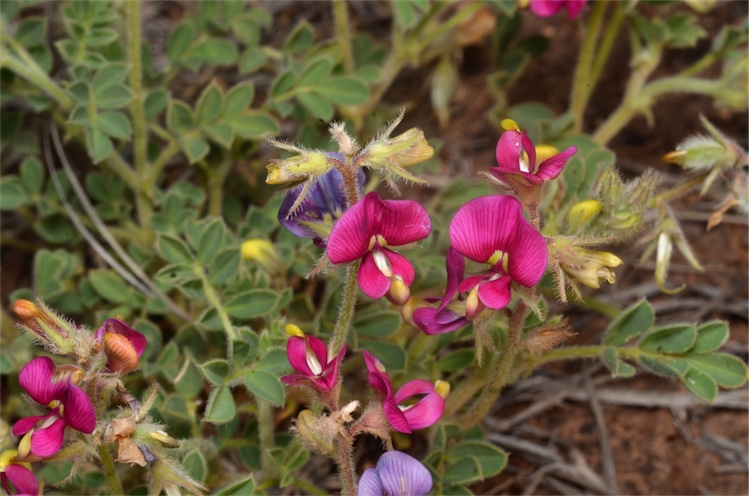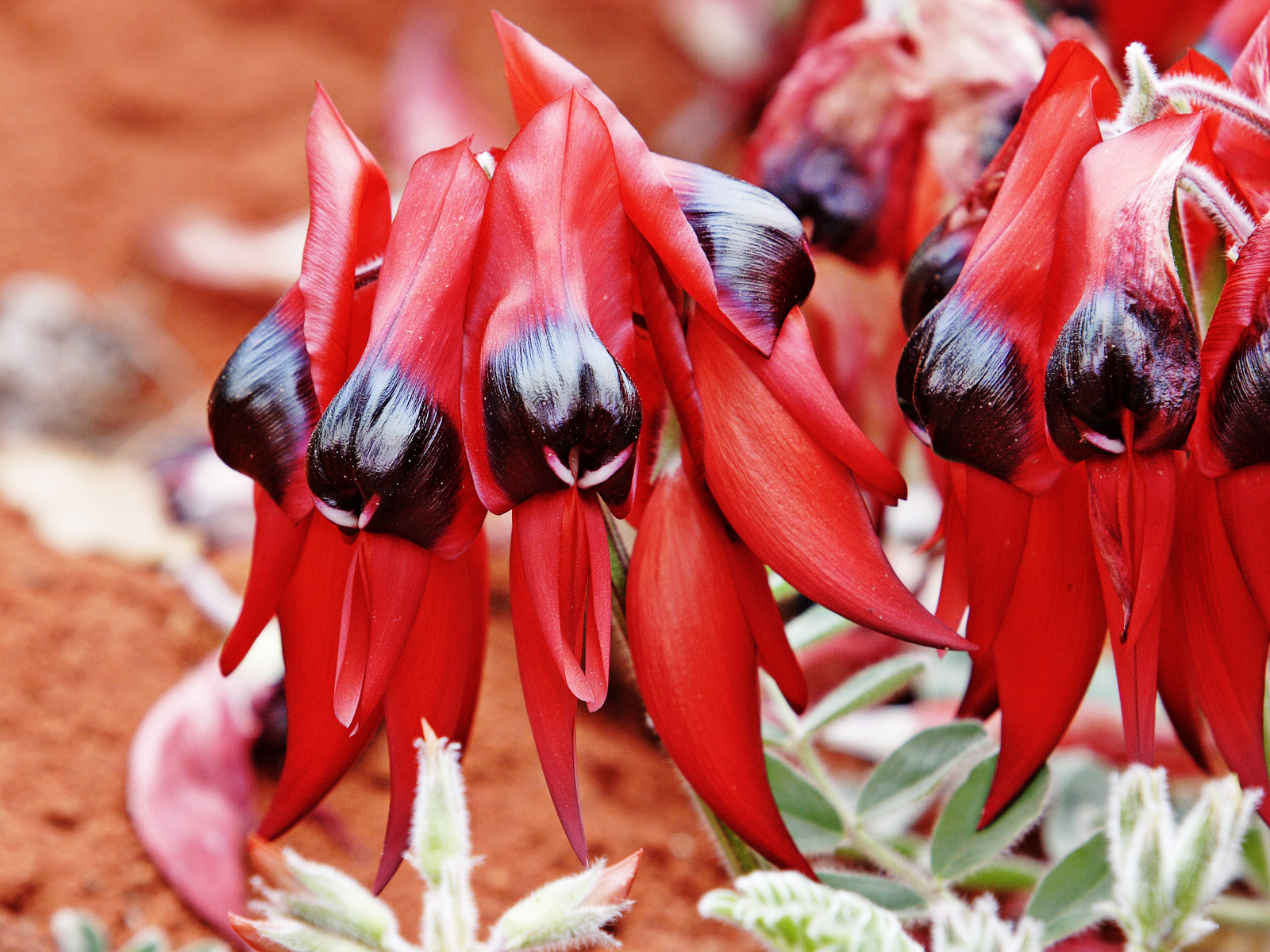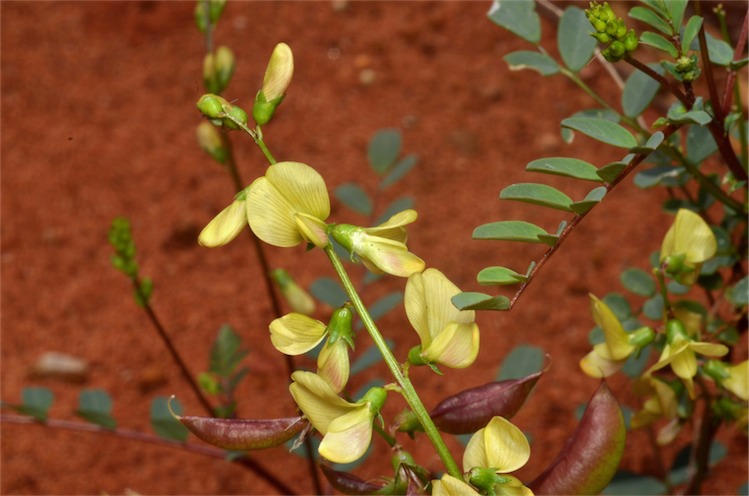Swainsona on:
[Wikipedia]
[Google]
[Amazon]








 ''Swainsona'' is a genus of about 85 species of flowering plants in the family
''Swainsona'' is a genus of about 85 species of flowering plants in the family








 ''Swainsona'' is a genus of about 85 species of flowering plants in the family
''Swainsona'' is a genus of about 85 species of flowering plants in the family Fabaceae
Fabaceae () or Leguminosae,International Code of Nomen ...
, and is endemic
Endemism is the state of a species being found only in a single defined geographic location, such as an island, state, nation, country or other defined zone; organisms that are indigenous to a place are not endemic to it if they are also foun ...
to Australia. Plants in this genus are herbs
Herbs are a widely distributed and widespread group of plants, excluding vegetables, with savory or aromatic properties that are used for flavoring and garnish (food), garnishing food, for medicinal purposes, or for fragrances. Culinary use typi ...
or subshrubs with imparipinnate
Pinnation (also called pennation) is the arrangement of feather-like or multi-divided features arising from both sides of a common axis. Pinnation occurs in biological morphology, in crystals, such as some forms of ice or metal crystals, and in ...
leaves and usually purple flowers similar to others in the family.
Description
Plants in the genus ''Swainsona'' areprostrate
Prostrate may refer to:-
*Prostration, a position of submission in religion etc.
*Prone position, a face-down orientation of the body
*Prostrate shrub
A prostrate shrub is a woody plant, most of the branches of which lie upon or just above the ...
to erect annual
Annual may refer to:
*Annual publication, periodical publications appearing regularly once per year
**Yearbook
**Literary annual
*Annual plant
*Annual report
*Annual giving
*Annual, Morocco, a settlement in northeastern Morocco
*Annuals (band), a ...
or perennial
In horticulture, the term perennial ('' per-'' + '' -ennial'', "through the year") is used to differentiate a plant from shorter-lived annuals and biennials. It has thus been defined as a plant that lives more than 2 years. The term is also ...
herbs or subshrubs, often with many stems at the base. The leaves are usually imparipinnate (pinnate
Pinnation (also called pennation) is the arrangement of feather-like or multi-divided features arising from both sides of a common axis. Pinnation occurs in biological morphology, in crystals, such as some forms of ice or metal crystals, and ...
, with a terminal leaflet) with a few to many leaflets, with stipule
In botany, a stipule is an outgrowth typically borne on both sides (sometimes on just one side) of the base of a leafstalk (the petiole (botany), petiole). They are primarily found among dicots and rare among monocots. Stipules are considered part ...
s at the base of the petiole
Petiole may refer to:
*Petiole (botany), the stalk of a leaf, attaching the blade to the stem
*Petiole (insect anatomy)
In entomology, petiole is the technical term for the narrow waist of some hymenopteran insects, especially ants, bees, and ...
. A few to many flowers are borne in a raceme
A raceme () or racemoid is an unbranched, indeterminate growth, indeterminate type of inflorescence bearing flowers having short floral stalks along the shoots that bear the flowers. The oldest flowers grow close to the base and new flowers are ...
in leaf axils on an erect peduncle with bract
In botany, a bract is a modified or specialized leaf, associated with a reproductive structure such as a flower, inflorescence axis or cone scale.
Bracts are usually different from foliage leaves in size, color, shape or texture. They also lo ...
s at the base, and small bracteoles
In botany, a bract is a modified or specialized leaf, associated with a reproductive structure such as a flower, inflorescence axis or cone scale.
Bracts are usually different from foliage leaves in size, color, shape or texture. They also look ...
at the base of the sepal
A sepal () is a part of the flower of angiosperms (flowering plants). Usually green, sepals typically function as protection for the flower in bud, and often as support for the petals when in bloom., p. 106
Etymology
The term ''sepalum'' ...
s. The sepals are joined at the base to form a bell-shaped tube with 5 equal lobes, or the upper 2 lobes shorter. The petals are mostly purple, sometimes white, pink, yellow orange or red. The standard petal is kidney-shaped to more or less round, usually longer than the wings
A wing is a type of fin that produces both lift and drag while moving through air. Wings are defined by two shape characteristics, an airfoil section and a planform. Wing efficiency is expressed as lift-to-drag ratio, which compares the bene ...
and often longer than the keel
The keel is the bottom-most longitudinal structural element of a watercraft, important for stability. On some sailboats, it may have a fluid dynamics, hydrodynamic and counterbalancing purpose as well. The keel laying, laying of the keel is often ...
. There are ten stamen
The stamen (: stamina or stamens) is a part consisting of the male reproductive organs of a flower. Collectively, the stamens form the androecium., p. 10
Morphology and terminology
A stamen typically consists of a stalk called the filament ...
s, nine of which are joined with each other and the tenth free and facing the standard petal.
Taxonomy
The genus ''Swainsona'' was first formally described in 1806 byRichard Anthony Salisbury
Richard Anthony Salisbury (born Richard Anthony Markham; 2 May 1761 – 23 March 1829) was a British botanist. While he carried out valuable work in horticultural and botanical sciences, several bitter disputes caused him to be ostracised by hi ...
in '' Paradisus Londinensis'' and the first species he described (the type
Type may refer to:
Science and technology Computing
* Typing, producing text via a keyboard, typewriter, etc.
* Data type, collection of values used for computations.
* File type
* TYPE (DOS command), a command to display contents of a file.
* ...
species) was ''Swainsona coronillifolia'', (now accepted as a synonym
A synonym is a word, morpheme, or phrase that means precisely or nearly the same as another word, morpheme, or phrase in a given language. For example, in the English language, the words ''begin'', ''start'', ''commence'', and ''initiate'' are a ...
of '' Swainsona galegifolia''.
A member of the family Fabaceae
Fabaceae () or Leguminosae,International Code of Nomen ...
(legumes
Legumes are plants in the pea family Fabaceae (or Leguminosae), or the fruit or seeds of such plants. When used as a dry grain for human consumption, the seeds are also called pulses. Legumes are grown agriculturally, primarily for human consu ...
), this species is most closely related to the New Zealand genera ''Montigena
''Montigena'' is a genus of flowering plant in the legume family (biology), family Fabaceae. It includes the sole species ''Montigena novae-zelandiae'', known more commonly the scree pea, a dicotyledonous herb endemic to the South Island of Ne ...
'' (scree pea), ''Clianthus
''Clianthus'', commonly known as kaka beak (''kōwhai ngutukākā'' in Māori), is a genus of flowering plants in the legume family Fabaceae, comprising two species of shrubs endemic to the North Island of New Zealand. They have striking cluste ...
'' (kakabeak), and ''Carmichaelia'' ( New Zealand broom). The genus name (''Swainsona'') honours the English botanist Isaac Swainson.
A few species are known to produce swainsonine
Swainsonine is an indolizidine alkaloid. It is a potent inhibitor of Golgi alpha-mannosidase II, an immunomodulator, and a potential chemotherapy drug. As a toxin in locoweed (likely its primary toxin) it also is a significant cause of econo ...
, a phytotoxin
Phytotoxins are substances that are poisonous or toxic to the growth of plants. Phytotoxic substances may result from human activity, as with herbicides, or they may be produced by plants, by microorganisms, or by naturally occurring chemical react ...
harmful to livestock
Livestock are the Domestication, domesticated animals that are raised in an Agriculture, agricultural setting to provide labour and produce diversified products for consumption such as meat, Egg as food, eggs, milk, fur, leather, and wool. The t ...
(see Locoweed
Locoweed (also crazyweed and loco) is a common name in North America for any plant that produces swainsonine, an alkaloid harmful to livestock. Worldwide, swainsonine is produced by a small number of species, most of them in three genera of the ...
). In Australia, animals intoxicated with swainsonine are said to be pea struck.
Species list
The following is a list of species of ''Swainsona'' accepted byPlants of the World Online
Plants of the World Online (POWO) is an online taxonomic database published by the Royal Botanic Gardens, Kew.
History
Following the Convention on Biological Diversity, the Royal Botanic Gardens in Kew launched Plants of the World Online i ...
as of 10 September 2023:
*'' Swainsona acuticarinata'' (N.T., S.A., W.A.)
*'' Swainsona adenophylla'' – violet swainson-pea, violet Darling pea (S.A., N.S.W., Vic.)
*''Swainsona affinis
''Swainsona affinis'', commonly known as common poison pea, is a species of flowering plant in the family Fabaceae and is endemic to arid areas of inland Australia. It is a prostrate Perennial plant, perennial Herbaceous plant, herb with Pinnat ...
'' – common poison pea (W.A., S.A., N.T., Qld, N.S.W.)
*'' Swainsona beasleyana'' (W.A.)
*''Swainsona behriana
''Swainsona behriana'', commonly known as Behr's swainsona, is a species of flowering plant in the family Fabaceae and is endemic to south-eastern continental Australia. It is a prostrate or low-growing perennial herb with imparipinnate leaves u ...
'' – Behr's swainsona (N.S.W., S.A., Vic.)
*'' Swainsona brachycarpa'' – slender swainson-pea (N.S.W., Qld., Vic.)
*''Swainsona bracteata
''Swainsona bracteata'' is a species of flowering plant in the family Fabaceae and is endemic to eastern Australia. It is a perennial herb with imparipinnate leaves usually with 19 to 25 narrowly egg-shaped leaflets, and racemes of about 20 whit ...
'' (N.S.W., Qld.)
*''Swainsona burkei
''Swainsona burkei'' is a species of flowering plant in the family Fabaceae and is endemic to northern Australia. It is a prostrate or perennial subshrub with imparipinnate leaves usually with 5 to 11 oblong to narrowly egg-shaped leaflets, and ...
'' (N.T., Qld.)
*''Swainsona burkittii
''Swainsona burkittii'', commonly known as woolly Darling pea, is a species of flowering plant in the family Fabaceae and is endemic to inland Australia. It is an erect or low-lying Perennial plant, perennial with Pinnation#Number of divisions, ...
'' – woolly Darling pea (S.A., N.S.W.)
*'' Swainsona cadellii'' (N.S.W.)
*'' Swainsona calcicola'' (W.A.)
*'' Swainsona campestris'' (S.A., W.A.)
*'' Swainsona campylantha'' – Gilgai Darling pea (Qld., N.T., S.A., N.S.W., W.A.)
*'' Swainsona canescens'' – grey swainsona (Qld., S.A., W.A.)
*'' Swainsona colutoides'' – bladder senna, bladder vetch (W.A., N.T., S.A., N.S.W.)
*'' Swainsona complanata'' (W.A.)
*'' Swainsona cornuta'' (W.A.)
*'' Swainsona cyclocarpa'' (W.A., N.T.)
*'' Swainsona decurrens'' (W.A.)
*'' Swainsona dictyocarpa'' (S.A.)
*'' Swainsona disjuncta'' (W.A., S.A., N.T.)
*'' Swainsona ecallosa'' (W.A.)
*''Swainsona elegans
''Swainsona elegans'' is a species of flowering plant in the family Fabaceae and is endemic to Western Australia. It is a prostrate or ascending annual with imparipinnate leaves, usually with 7 to 15 egg-shaped or elliptic leaflets, and racemes ...
'' (W.A.)
*'' Swainsona elegantoides'' (W.A.)
*''Swainsona eremaea
''Swainsona eremaea'' is a species of flowering plant in the family Fabaceae and is endemic to South Australia. It is a low-growing, spreading, probably perennial plant with imparipinnate leaves with 5 to 11 linear, oblong to broadly wedge-shape ...
'' (S.A.)
*'' Swainsona extrajacens'' (S.A., N.S.W.)
*'' Swainsona fissimontana'' (S.A., N.S.W.)
*'' Swainsona flavicarinata'' (W.A., N.T., S.A., Qld., N.S.W.)
*''Swainsona formosa
''Swainsona formosa'', commonly known as Sturt's desert pea or Sturt pea, is a species of flowering plant in the family Fabaceae and is native to all continental states and the Northern Territory of Australia, with the exception of Victoria. It ...
'' – Sturt's desert pea or Sturt pea (W.A., N.T., S.A., Qld., N.S.W.)
*'' Swainsona forrestii'' (W.A.)
*'' Swainsona fraseri'' (N.S.W., Qld.)
*'' Swainsona fuscoviridis'' (S.A.)
*'' Swainsona galegifolia'' – smooth Darling pea (N.S.W., Qld., Vic.)
*'' Swainsona gracilis'' (W.A.)
*'' Swainsona greyana'' – Darling pea, hairy-Darling pea (S.A., N.S.W., Vic.)
*'' Swainsona halophila'' (W.A.)
*''Swainsona incei
''Swainsona incei'' is a species of flowering plant in the family Fabaceae and is endemic to inland Western Australia. It is an erect or ascending annual, sometimes perennial herb with imparipinnate leaves with 5 to 9 lance-shaped to elliptic l ...
'' (W.A.)
*'' Swainsona katjarra'' – Birriliburu swainsona (W.A.)
*'' Swainsona kingii'' (W.A., S.A.)
*'' Swainsona laciniata'' (W.A., N.T.)
*''Swainsona laxa
''Swainsona laxa'', the skeleton pea, yellow swainson-pea, yellow Darling pea, or sandhill swainsona, is a species of flowering plant in the family Fabaceae and is endemic to inland Australia. It is an erect, shrublike herb, often appearing le ...
'' – skeleton pea, yellow swainson-pea, yellow Darling pea, sandhill swainsona (N.S.W., S.A., N.T., Qld.)
*'' Swainsona leeana'' (W.A., S.A.)
*'' Swainsona lessertiifolia'' – coast swainson-pea, bog pea, Darling pea poison pea, poison vetch (S.A., Vic., Tas.)
*'' Swainsona longicarinata'' (W.A.)
*'' Swainsona longipilosa'' (W.A.)
*'' Swainsona luteola'' – dwarf Darling-pea (N.S.W., Qld)
*''Swainsona maccullochiana
''Swainsona maccullochiana'', commonly known as Ashburton pea, is a species of flowering plant in the family Fabaceae. It is an upright annual with purple-reddish, pink or bluish pea-like flowers from spring to summer and is endemic to Western ...
'' – Ashburton pea (W.A.)
*'' Swainsona microcalyx'' – wild violet (S.A., W.A.)
*'' Swainsona microphylla'' – small-leaf swainson-pea, small-leaf swainsona, poison swainson-pea (W.A., N.T., S.A., Qld., N.S.W., Vic.)
*'' Swainsona minutiflora'' (S.A.)
*'' Swainsona monticola'' – notched Swainson-pea (N.S.W., A.C.T.)
*''Swainsona murrayana
''Swainsona murrayana'', commonly known as slender Darling-pea or slender Darling pea, is a species of flowering plant in the family Fabaceae and is endemic to south-eastern mainland Australia. It is a prostrate, low-growing or erect Perennial p ...
'' – slender Darling-pea, slender Darling pea (N.S.W., Vic., Qld., S.A.)
*'' Swainsona oligophylla'' (N.T., S.A., Qld., N.S.W.)
*'' Swainsona oliveri'' (W.A., N.T., S.A., N.S.W.)
*'' Swainsona oroboides'' – variable swainsona, kneed Darling pea (W.A., N.T., S.A., Qld., N.S.W.)
*'' Swainsona paradoxa'' (W.A.)
*'' Swainsona parviflora'' (Qld., N.S.W.)
*'' Swainsona paucifoliolata'' (W.A.)
*'' Swainsona pedunculata'' (W.A.)
*'' Swainsona perlonga'' (W.A.)
*'' Swainsona phacoides'' – dwarf Swainson-pea, lilac Darling pea (N.S.W., Vic., S.A., W.A., N.T., Qld.)
*'' Swainsona plagiotropis'' – red swainsona-pea (N.S.W., Vic.)
*'' Swainsona procumbens'' – Broughton pea, swamp pea (N.S.W., Vic., Qld.)
*'' Swainsona pterostylis'' (W.A.)
*'' Swainsona purpurea'' – purple Swainson-pea, purple Darling pea (W.A., S.A., N.T., Qld., N.S.W.)
*'' Swainsona pyrophila'' – yellow Swainson-pea, yellow Darling pea (S.A., Vic., N.S.W.)
*'' Swainsona queenslandica'' – smooth Darling pea (Qld., N.S.W.)
*'' Swainsona recta'' – mountain Swainson-pea, small purple pea (N.S.W., Vic.)
*'' Swainsona reticulata'' – kneed Swainson-pea (S.A., N.S.W., Vic., Qld.)
*'' Swainsona rostellata'' (W.A.)
*'' Swainsona rostrata'' (N.T., S.A.)
*'' Swainsona rotunda'' (W.A.)
*'' Swainsona sejuncta'' (Qld.)
*'' Swainsona sericea'' – silky Swainson-pea, silky pea (N.S.W., Vic., S.A.)
*'' Swainsona similis'' (N.S.W., Qld.)
*'' Swainsona stenodonta'' (W.A.)
*''Swainsona stipularis
''Swainsona stipularis'' is a species of flowering plant in the family Fabaceae and is endemic to southern continental Australia. It is a spreading to ascending perennial herb, with imparipinnate leaves with 5 to 11 broadly linear to heart-shape ...
'' (N.S.W., S.A., Qld., Vic.)
*'' Swainsona swainsonioides'' – downy Swainson-pea, downy Darling pea (N.S.W., S.A., Qld., Vic.)
*'' Swainsona tanamiensis'' (W.A., N.T.)
*'' Swainsona tenuis'' (W.A., S.A., N.T.)
*'' Swainsona tephrotricha'' (S.A.)
*'' Swainsona thompsoniana'' (W.A.)
*'' Swainsona unifoliolata'' (W.A., N.T., S.A.)
*'' Swainsona vestita'' (S.A.)
*'' Swainsona villosa'' (W.A., N.T., S.A.)
*'' Swainsona viridis'' – creeping Darling pea (N.S.W., S.A.)
Distribution
Species of ''Swainsona'' are found in all six Australian states and in the Northern Territory and Australian Capital Territory.References
{{Authority control Endemic flora of Australia Fabaceae genera Fabales of Australia